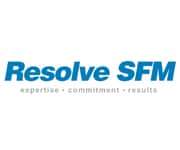Good Practices for Managing Australia's Public and Community Housing Assets
Managing public and community housing assets in Australia requires a structured approach to ensure efficiency, sustainability, and equitable access to housing resources for all residents. This article explores essential practices that contribute to effective asset management in the realm of public and community housing across Australia.
Importance of Effective Asset Management
Public and community housing assets play a crucial role in addressing housing needs and promoting social inclusion. Effective asset management ensures that these properties are well-maintained, financially sustainable, and meet the diverse needs of residents. By implementing good practices, housing providers can optimise resource allocation, enhance tenant satisfaction, and achieve long-term operational success.
Key Practices for Managing Housing Assets
- Strategic Asset Planning: Strategic asset planning involves setting clear objectives, prioritising investments, and aligning resources with organisational goals. It includes conducting thorough needs assessments, analysing market trends, and developing long-term asset management plans for maintenance, upgrades, and community development initiatives.
- Regular Maintenance and Upkeep: Proactive maintenance is essential to preserving the value and functionality of housing assets. Regular inspections, preventive repairs, and scheduled upgrades ensure that properties remain safe, habitable, and compliant with building codes and standards. This practice not only extends the lifespan of assets but also minimises costly repairs and disruptions for residents.
- Tenant Engagement and Support: Engaging tenants in decision-making processes and providing supportive services are integral to successful asset management. Effective communication channels, tenant councils, and feedback mechanisms facilitate dialogue and foster a sense of community ownership. Additionally, offering support services such as financial literacy programs, vocational training, and social activities enhances residents' quality of life and promotes sustainable tenancies.
- Financial Sustainability and Resource Allocation: Sound financial management is fundamental to maintaining housing affordability and operational efficiency. Housing providers must develop transparent budgeting processes, monitor expenditures against income, and explore diverse funding sources to support capital improvements and service delivery. Effective resource allocation ensures that limited funds are allocated strategically to address immediate needs and long-term investment goals.
- Compliance and Risk Management: Adhering to regulatory requirements and mitigating risks are critical in managing housing assets. Housing providers must stay updated on legislative changes, conduct regular audits, and implement robust risk management strategies to safeguard assets and ensure compliance with legal, health, and safety standards. This proactive approach minimises liabilities and enhances organisational resilience.
Benefits of Implementing Good Practices
Implementing these practices yields numerous benefits for housing providers, residents, and the broader community:
- Improved Tenant Satisfaction: Well-maintained properties and responsive management contribute to higher tenant satisfaction and retention rates.
- Enhanced Property Value: Regular upkeep and strategic investments increase property values and attractiveness in the housing market.
- Community Well-being: Supportive services and community engagement initiatives promote social cohesion and residents' well-being.
- Sustainable Operations: Effective financial management and risk mitigation strategies ensure long-term sustainability and resilience against economic fluctuations.
Conclusion
Effective asset management is pivotal in meeting the housing needs of Australia's diverse communities and ensuring the sustainable utilisation of public and community housing resources. By adopting strategic planning, proactive maintenance, tenant engagement, financial prudence, and compliance with regulatory standards, housing providers can achieve operational excellence and contribute positively to the social fabric of communities. Embracing these good practices not only enhances housing asset performance but also fosters inclusive and resilient communities across Australia.
By prioritising these practices, housing providers can navigate challenges, capitalise on opportunities, and uphold their commitment to providing safe, affordable, and sustainable housing solutions for all residents. This proactive approach strengthens organisational capabilities and underscores the importance of equitable access to housing as a cornerstone of societal well-being in Australia.
Pinnacle CMMS (Computerised Maintenance Management System) offers invaluable public and community housing support by streamlining maintenance operations and enhancing overall efficiency. By centralising asset management, scheduling preventive maintenance tasks, and tracking work orders, Pinnacle CMMS ensures properties are well-maintained and compliant with regulatory standards. This system empowers housing managers to prioritise tasks effectively, optimise resource allocation, and extend the lifespan of critical infrastructure. Moreover, with robust reporting and analytics capabilities, Pinnacle CMMS enables data-driven decision-making, fostering transparency and accountability in housing operations. By leveraging Pinnacle CMMS, public and community housing entities can deliver better living conditions for residents while maximising operational effectiveness and cost-efficiency.
Learn more about effective housing asset management strategies. Contact us today!














